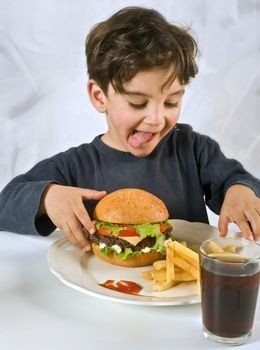
A new research claims the logos of companies like McDonalds, Pizza Hut and Burger King are “branded” on the youngsters’ brains.
MRI scans of children’s appetite and pleasure centres reveals they light up when they are shown advertising images of their favorite fast foods, according to scientists.
But when the logos were well-known brands but had nothing to do with food the same areas of the brain failed to respond.
They appear to have tapped into the “reward” areas of the brain which develop before youngsters learn self-control.

Researcher at the University of Missouri-Kansas City and the University of Kansas Medical Center, divided 120 popular food and non-food brands, including McDonald’s and Rice Krispies, and BMW and FedEx, reported the Sunday Independent.
They used a magnetic resonance imaging scanner which monitored changes in the blood flow that increases when the brain becomes more active.
Analysis of the tests on children, aged 10 to 14, showed there was increased activity in parts of the brain in the “reward” centres and in driving and controlling appetite.
Study leader Dr. Amanda Bruce told the Independent: “Research has shown children are more likely to choose those foods with familiar logos.
“That is concerning because the majority of foods marketed to children are unhealthy.”
Last year, children aged six to 13, took part in research into the effect of exposure to TV ads for unhealthy food products.
The children were shown 10 advertisements for junk food and then asked to choose between three food options which were described as “high fat, high carbohydrate”, “high protein”, and “low energy”.
Options for high protein included items like roast chicken. The low energy ones included items like salad.
The children were then shown a series of ten advertisements for toys and presented with a similar questionnaire.
Results of the study suggest that children exposed to unhealthy food ads – as opposed to toy ads – are far more likely to show unhealthy eating preferences.
These effects were especially pronounced among study subjects who typically watched more than 21 hours of TV per week.